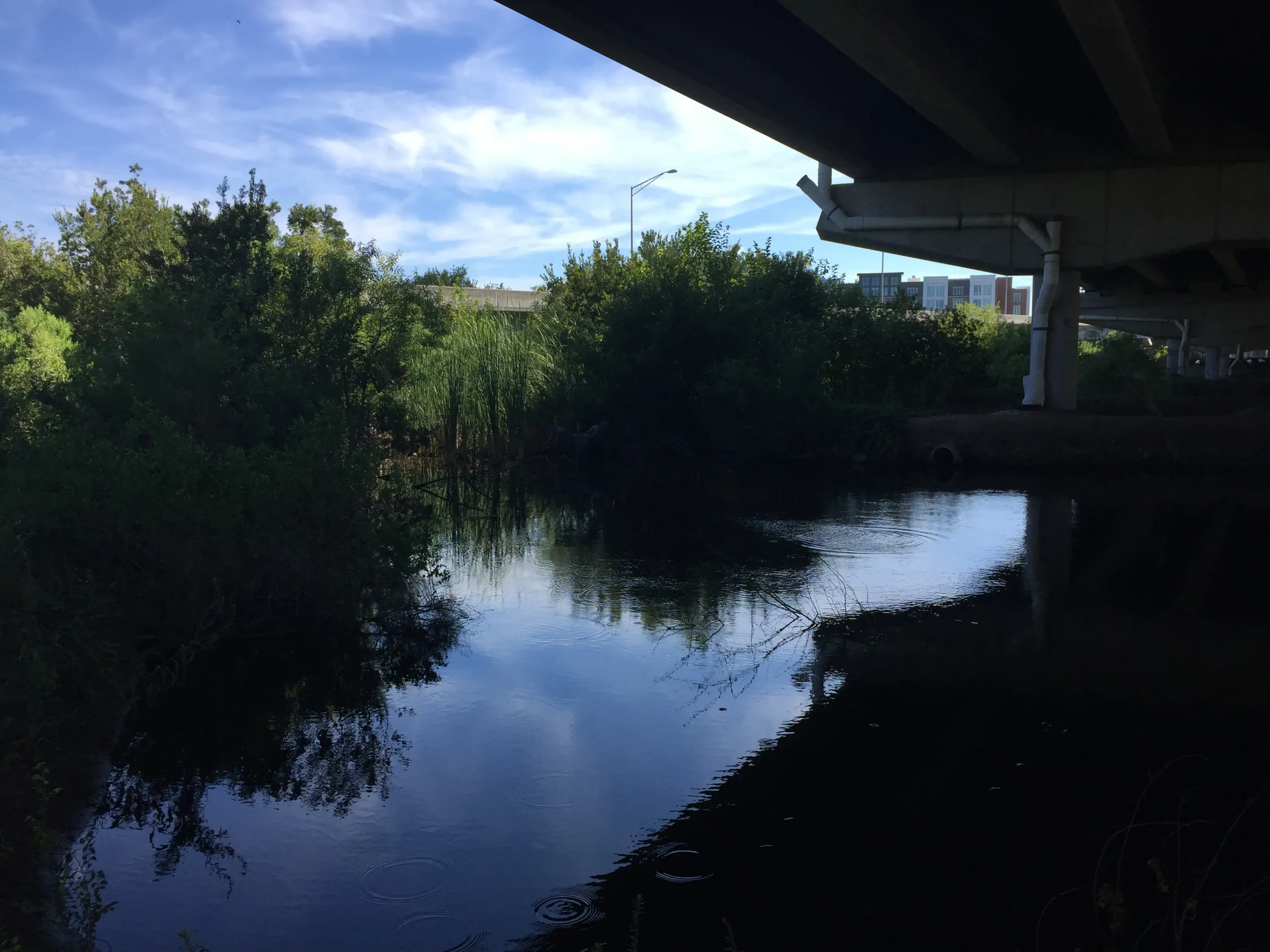Huger St. King St. Pump Station

The intersection at Huger Street and King Street in Charleston, South Carolina, is significant for two reasons: the intersection is adjacent to the William Enston Home, a historic and unique Romanesque Revival neighborhood that today serves as low-to-moderate-income housing; and the intersection floods regularly during heavy rains.
JMT has been working with the City of Charleston to address the flooding and improve safety at the intersection since 2018.
Our team first conducted a comprehensive drainage study of the area. The study examined the efficiency of the existing drainage system, resulting in several recommendations to improve drainage in the area, including replacing the existing drainage pipes with larger pipes for additional capacity; construct a pump station, wet well, and force main outfall; and install an additional pipe outlet closer to the intersection to drain to the new wet well and eventually to the force main discharge point.
To put these recommendations into action, our team went to work designing an update to the intersection’s drainage system, with input from the City.
As part of the design process, our team created a digital model of the area to compare flood conditions during heavy rainfall events. Specifically, the team looked at flooding after a brief but intense “rain bomb” event and after several different 24-hour design storms. The models showed that the team’s design will significantly improve flooding conditions in both cases, eliminating flooding during a rain bomb event and reducing flooding during one of the design storms from four-and-a-half feet for 35 hours to about one-and-a-half feet for just two-and-a-half hours.
Phasing to accommodate client and community
Construction for this project is split into two phases to minimize impact on movement through the intersection and to accommodate the City’s budget. The initial phase, which involved improvements to the intersection, has been completed, and the second phase is currently underway. This second phase will involve the construction of a pump station, wet well, and force main to improve the movement of water out of the intersection. JMT is providing construction inspection services throughout both phases.
Phase one began in July 2021 and was completed in March 2022. In this first phase, which was partially funded through a $500,000 matching Rural Infrastructure Authority grant under the SC Infrastructure Investment Program (SCIIP), the project team upsized the drainage pipes and replaced the water and sewer mains in the area surrounding the intersection. The deep excavation and limited workspace required the use of trench boxes, which are metal structures that stabilize the walls of the trenches where pipes are being placed while contractors are at work.
In addition to the new pipes, the team added 13 manholes and 27 dual combination inlets—curb drains placed in sets of two that feature a grating to remove debris from stormwater and allow for more water to enter the system. On the other end of the system, a new 30-inch tidal valve was added to prevent incoming tidal water from backing into the system and causing additional flooding in the intersection during high tides.
Our team also coordinated with a subconsultant, S&ME, which completed environmental testing and improvements during the construction process in phase one. The excavated material from the trenches–around 2,100 tons of it–was transported elsewhere to be tested for contamination before disposal. The team also used a frac tank, which is a large, movable storage container, to remove old, fuel-contaminated water.
Phase one significantly improved the drainage system’s capacity, and the team’s efficiency yielded a project approximately $330,000 under budget.
Phase two features
The team kicked off the second and final phase of construction with a groundbreaking in late October 2024, and phase two is currently underway at the time of writing.
The main features of phase two are a new pump station, wet well, and force main outfall. The pump station will not only be functional but also provide a new community recreation space.
This phase of the project will feature a wet well/pond that can hold 360,000 gallons of water and two submersible pumps capable of removing approximately 70,000 gallons of that water per minute. All that water will enter a new 54-inch force main–a pressurized pipe used for moving water when gravity is not enough–that empties into New Market Creek via a new outfall that will be constructed under the nearby I-26. The project team is also including a provision for another 48-inch force main connection to be added in the future.
The pump station itself is designed to mimic some of the unique architectural features seen in the nearby historic neighborhood. The pump station will be surrounded by a new public park, complete with seating and a rain garden filled with native plants that will help filter stormwater. The team’s goal for the pump station is to create a structure that both meets the intersection’s stormwater removal needs and serves as a safe and beautiful recreation area for the surrounding community.
Throughout phase two, JMT also coordinated with Soil Consultants Inc. to complete geotechnical testing to ensure the soil at the site would support the pump station structure, and with Greenberg Farrow, which is responsible for the pump station’s architecture and the new intersection landscaping.
This final phase of construction is expected to take 18 months and is currently underway. The drainage and intersection improvements created through this project will significantly improve flood conditions at the Huger Street and King Street intersection, making it a safer and more welcoming place for the community’s residents and visitors.